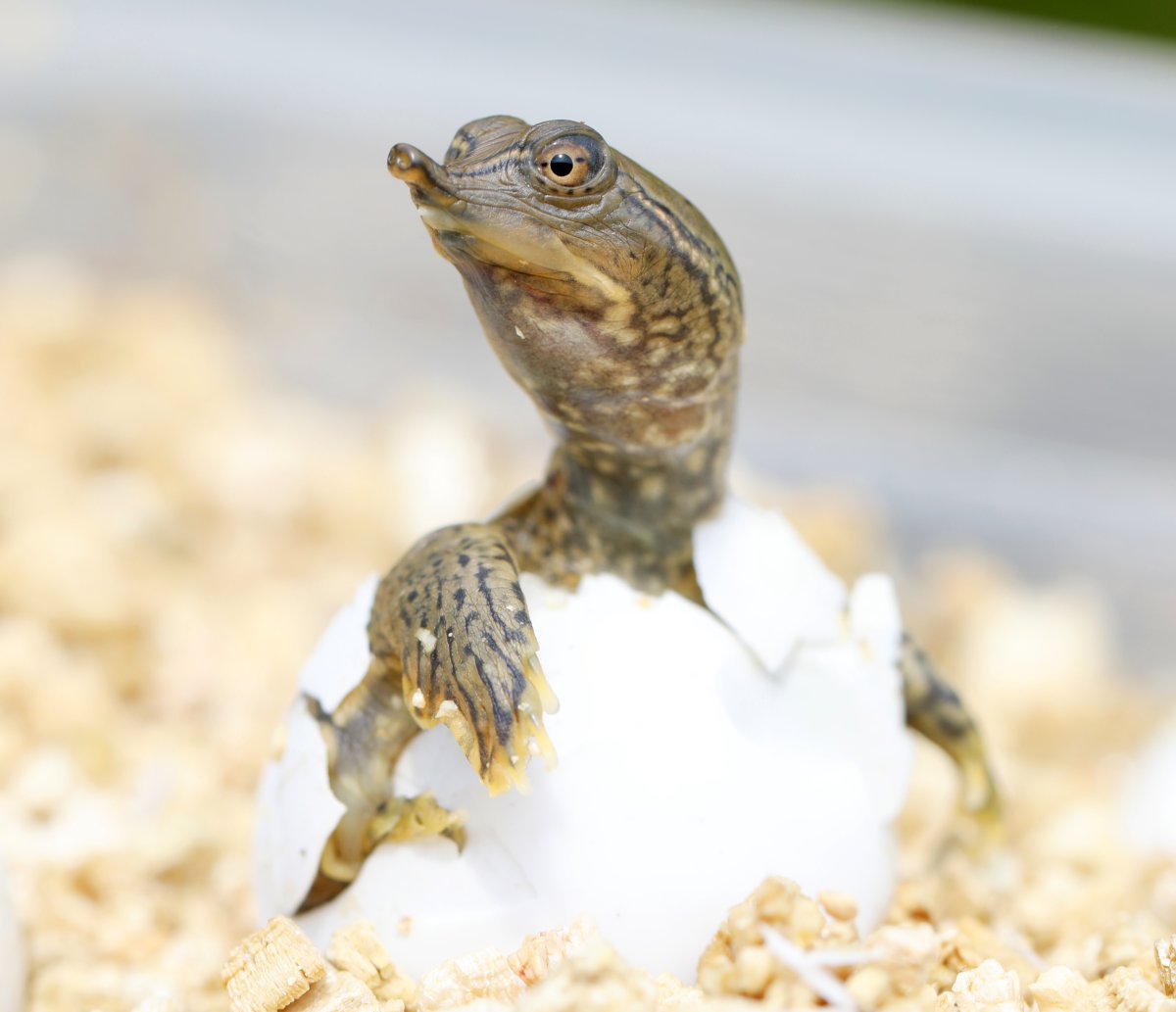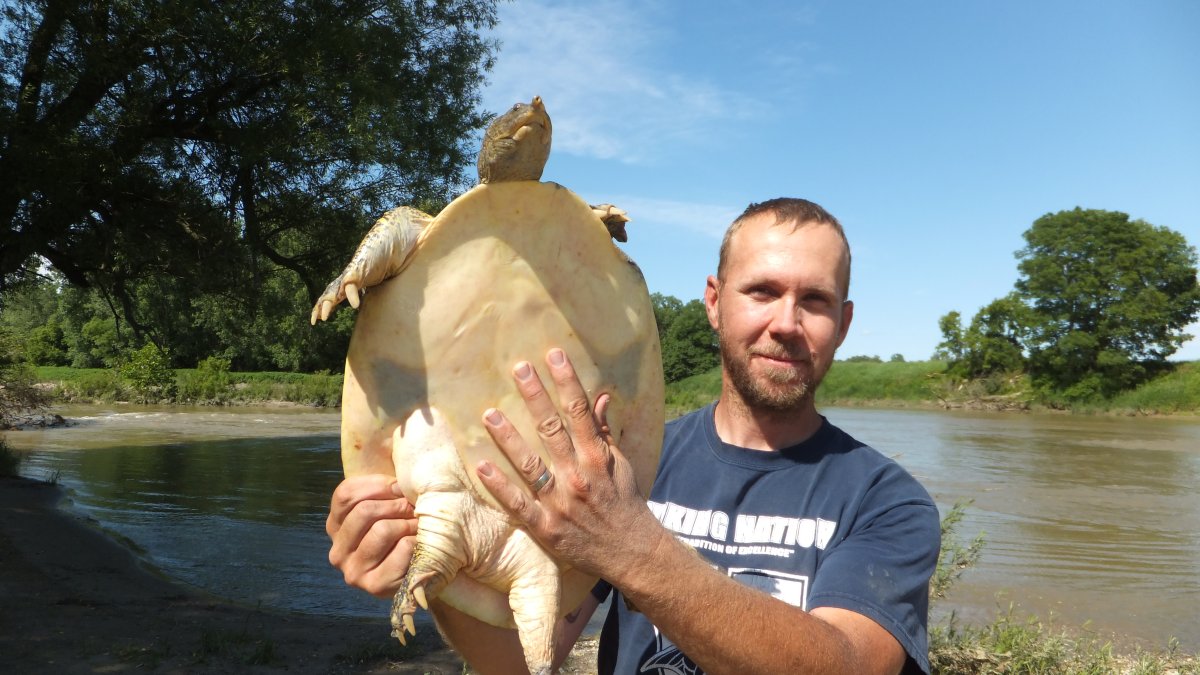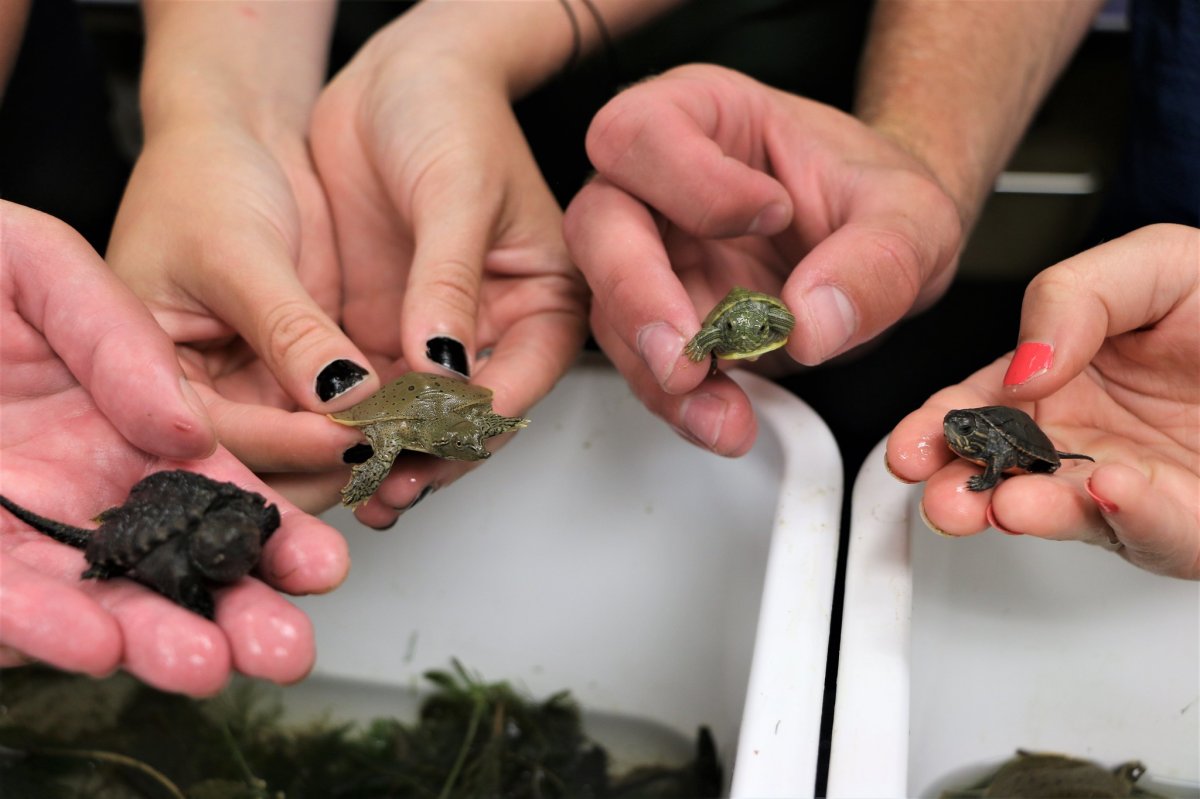The endangered spiny softshell turtle was on track to disappear entirely from the Thames River in the London, Ont., region until researchers stepped in nearly 30 years ago.

Today, the turtle population is not only recovering where researchers have concentrated their efforts, but is increasing downstream.
“Without the efforts of SOARR (Southern Ontario At Risk Reptiles), we would lose between 99 and 100 per cent of all softshell turtle nests each year,” said director Scott Gillingwater, who is also species at risk biologist with the Upper Thames River Conservation Authority (UTRCA).
“The success of our efforts with the spiny softshell turtle provide hope for others doing similar work with wildlife.”
Work began in 1994 when Gillingwater and a colleague surveyed the Thames and Sydenham rivers and found primarily older adult turtles. The following year, they looked for where the turtles were nesting and realized that most nests were being lost to predators like raccoons, coyotes, striped skunks and red foxes.
Turtle nests are also threatened by non-native plants overtaking nesting areas within the floodplain. An increase in floods, drought and extreme heat due to climate change, getting caught on fish hooks, and nest sites being trampled by people, off-road vehicles and sometimes cattle feeding in nearby pastures are also threats.
Initially, SOARR began putting up netting to protect the nests from predators, but it wasn’t enough to turn the tide. In 2008, they began their artificial insemination program, which improved their hatch success rate to over 90 per cent up from 17 to 49 per cent in the wild.
“By 2016, we also started to see our first young adult female softshell turtles begin to nest. Since they can take 12 to 15 years to reach reproductive maturity, this was a milestone,” Gillingwater said. “Our monitoring efforts have shown that all age classes, from small juveniles, all the way up to large adults, can now be found along the Thames River.”
SOARR now hatches out “more endangered freshwater turtles than any other similar program in North America,” Gillingwater says.
Ontario Nature, a wildlife protection charity, says Gillingwater has been a major contributor to its Ontario Reptile and Amphibian Atlas (ORAA). Over a 20 year span from 1998 to 2018, observations of eastern spiny softshell turtle added to the atlas increased geographically by 30 per cent. Ontario Nature was unable to provide where specifically the turtles had been spotted as “location data for this species is withheld due to its status.”
“The relatively large increase in total squares during that period is related to intensive survey effort associated with monitoring and population recovery actions,” Ontario Nature said in an email.
Recovery and protection of the spiny softshell, and other reptiles, is rewarding work for a man who says he earned the moniker turtle boy in his rural hometown by the time he was eight.
“By the age of 12, I initiated a large-scale turtle rescue program when local wetlands were drained for development,” he said. “At the age of 19 when I started working with the spiny softshell turtle professionally, my dream was realized.”
It’s far from a one-man operation, however, as Gillingwater depends on three to seven staff (depending on funding) and over 30 volunteers to support the program, which also involves incubating eggs of five other threatened or endangered reptiles species.
In 2023, the team incubated roughly 10,000 eggs of six species of reptiles.
“Many staff from this program have went on to work with wildlife across Canada and in some cases continue to work directly with reptiles at risk.”
The SOARR program, though, is not a “core mandated/funded program” at UTRCA and the provincial government recently chose to cease species at risk funding to conservation authorities, “something that SOARR relied on for the past few years.”
A spokesperson for the Ministry of the Environment, Conservation and Parks said the government wants to ensure conservation authorities are “focused on their core mandate of helping protect people and property from the risk of natural hazards, the conservation and management of conservation authority-owned lanes, and their roles in drinking water source protection.”
The Species at Risk Stewardship Program (SARSP) provides funding annually to “communities, organizations, landowners, Indigenous communities/groups, industry and academics,” Gary Wheeler said, and the proposal process is “highly competitive.”
“The SARSP guidelines are updated annually. This provides the Ministry with an opportunity to identify annual funding priorities and make program-related adjustments as needed,” Wheeler explained.
“Though Conservation Authorities were identified as non-eligible applicants in the most recent calls for proposals, they have been regular recipients of SARSP funding in the past. Since 2018, five project led by Conservation Authorities received SARSP funding totalling over $463,000.”
Gillingwater said SOARR still receives federal funding through the Habitat Stewardship Program for Species At Risk but that it has had to depend on community support to maintain the program.
Total program costs vary year-to-year due to staff wages, vehicle use/gas/insurance, equipment purchases and lab use, Gillingwater says, but the loss of provincial funding means they have to raise “at least $40,000 to $50,000 above any confirmed funding we have” from the federal government or other partner organizations.
“At a time when the outlook for many species is bleak, this story of success can reinvigorate and renew efforts for wildlife and habitat protection and research.”
Those looking to get involved or support conservation efforts can volunteer, report damage to habitat or threats to wildlife to the Ministry of Natural Resources, donate money, or use citizen apps like iNaturalist to report the location of rare wildlife.








Comments